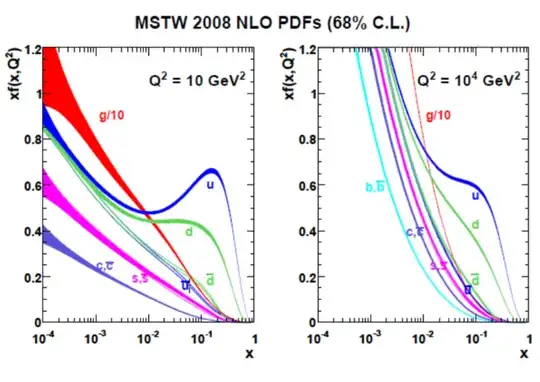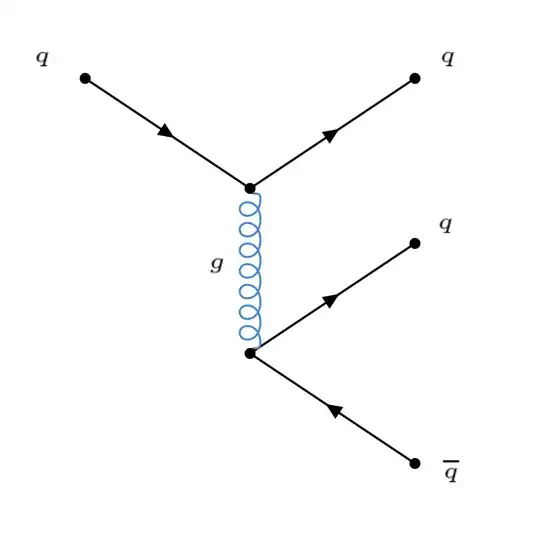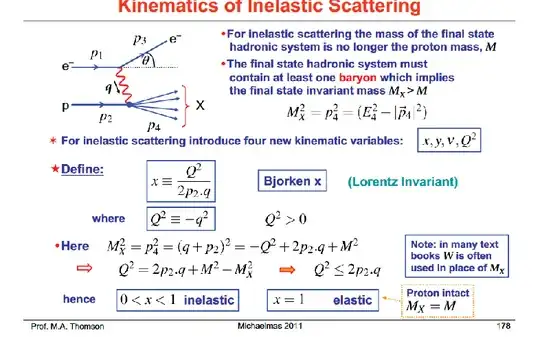In electron proton deep inelastic scatterings, the sea quarks or gluon PDFs are only dominant at low value of $x$. Thomson explained this in his book Modern Particle Physics (see page 194) by arguing
...in reality the proton is a dynamic system where the strongly interacting quarks are constantly exchanging virtual gluons that can fluctuate into virtual $q\bar{q}$ pairs through [strong] processes...Because gluons with large momenta are suppressed by the $1/q^2$ gluon propagator, this sea of virtual quarks and antiquarks tend to be produced at low values of x.
I am not able to see what this has to do with the value of $x$. Does this mean when $x$ decreases, the four momentum $q$ of the gluon also decreases? If so, why is it the case?


